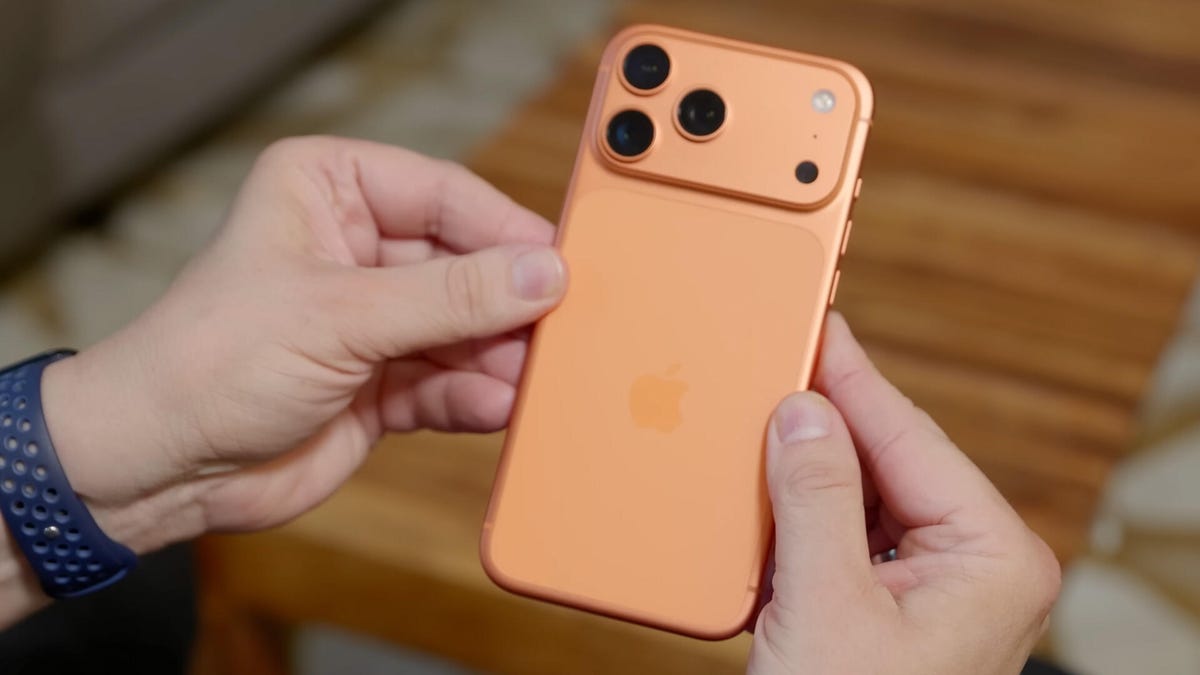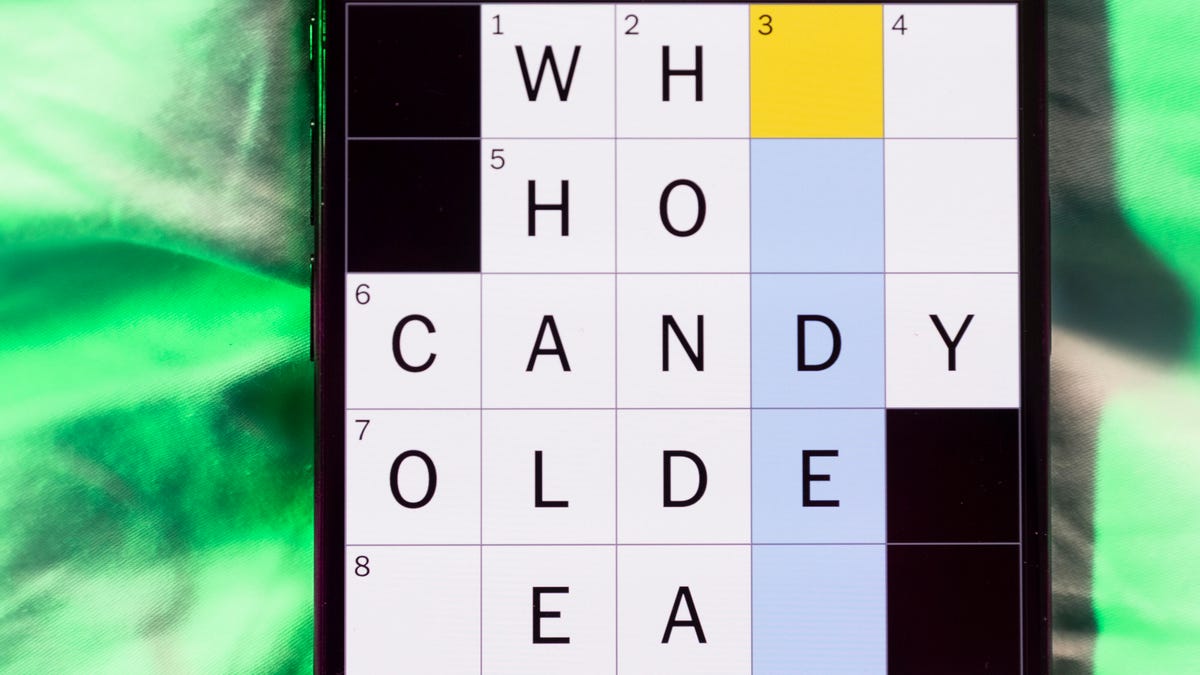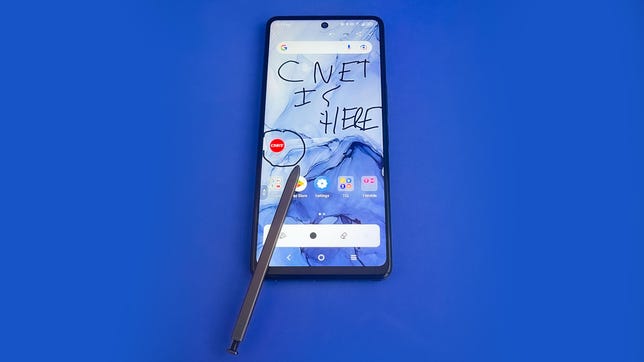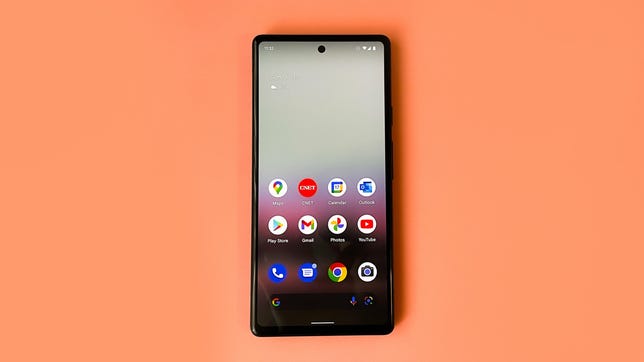Technologies
Best Phones Under $300: 5G Phones at Starter Prices
These phones prioritize essential features while providing a few productivity perks.

The best phones under $300 offer a taste of premium features, but in a device that still very much feels like a budget phone. That’s not a bad thing: These phones can make calls, send texts and run most apps and games for hundreds of dollars less than the iPhone 14 or Galaxy S23. They also provide access to 5G, which is important if you want to hold onto your device for a while, and some even come with a built-in stylus.
But I’m going to level with you: We have yet to use a phone in the $200 to $300 price range that feels like an excellent value. The absolute best picks in this category tend to be more expensive devices that are frequently discounted to $299 when on sale. For instance, Google’s $449 Pixel 6A is our current best phone for under $500, and it’s often discounted to $299.
That’s not to say phones in the $200 to $300 price range should be avoided. Some include decent cameras, a headphone jack, expandable storage and NFC support for mobile payments.
What are the tradeoffs with phones that cost $300 or less?
These cheaper devices tend to scale back significantly in one area or another in order to achieve those low prices. Most commonly, these drawbacks include limited software support, carrier support or bloatware (preloaded apps that you never asked for). These tradeoffs often mean that these devices should not be used after two to three years, especially after security update support ends.
It’s also notable that while these phones retail for $200 to $300, many of them are often available at a deep discount — or even for free — as part of a carrier subsidy deal. If you are planning to stick with the same wireless carrier for two years, these phones could just become part of the cost of your service.
Best phones under $300
Eli Blumenthal/CNET
The $299 OnePlus N20 5G isn’t an exciting phone, but it more than gets the job done for most situations. Unlike several phones on this list, you can buy it unlocked from OnePlus. It also provides high-end features we don’t always see at this price, like an in-screen fingerprint reader, faster 33W charging, 6GB of RAM and NFC for mobile payments. Despite being available directly from OnePlus, the N20 works with AT&T and T-Mobile but does not work with Verizon. The phone’s 5G support also only works through T-Mobile.
In his OnePlus N20 review, CNET Senior Editor Eli Blumenthal found the phone’s 64-megapixel main camera, 2-megapixel macro camera and 2-megapixel monochrome lens to take decent photos during the daytime. But its cameras struggle in the evening, which is a common issue on cheaper phones. The N20 also includes a 16-megapixel front-facing camera located in the top left of the phone’s display.
The phone is also only getting one major software update from Android 11 to Android 12, but will receive three years of security updates. As a result, despite the phone’s decent specs and slightly wider availability, it only makes sense to hang onto this phone for two to three years.
Mike Sorrentino/CNET
Reviewing the $258 TCL Stylus 5G was a journey for me last year. Specs-wise, it has a lot that I enjoyed. The phone’s TCL NxtVision HDR setting provided enhanced colors when I played games, TCL made minimal changes to Android 12 and I especially enjoyed the magnetic stylus that fits securely into its own slot on the phone.
However, the big reason why my review took four months is because of repetitive software bugs that make the phone otherwise tough to recommend. I experienced frequent restarts while using the phone and Bluetooth connectivity issues, the latter of which was eventually fixed through a software update. This phone is also locked to T-Mobile completely, so it can’t be used on other carriers and is filled with T-Mobile apps that are challenging to remove.
Yet if you absolutely must have a stylus and your budget is under $300, this is one of the better overall picks. But be wary of software issues, and remember the phone is only getting one major software update along with two years of security updates.
Mike Sorrentino/CNET
The $228 OnePlus Nord N300 5G is my favorite phone under $300. The only reason why I cannot recommend it above the N20 is because this phone is locked to T-Mobile. Despite being around $80 cheaper than the other OnePlus phone, it still has 33-watt fast charging, a 90Hz refresh rate display and a 48-megapixel main camera that does a decent job with photos and video. Its matte black look that highlights its two camera lenses also makes it one of the nicer-looking budget phones I’ve tested. The N300 improves on the N20 with its dual stereo speakers, over the single speaker on the N20, and I personally prefer the side fingerprint sensor over in-screen options like on the N20.
But apart from the availability issue, the N300 also suffers from a short software support timeline. The N300 will only get one major software update from Android 12 to Android 13 and two years of security updates. Even though that’s somewhat normal for the category, I still consider it a major drawback. There’s also a dose of T-Mobile bloatware, but at this price it’s easier to swallow.
If you are shopping specifically for a phone that works with T-Mobile or its Metro brand, the $228 OnePlus Nord N300 is definitely a solid choice. Just recognize you cannot take the phone to other carriers, and it won’t be a great option after two years of use.
Jessica Fierro/CNET
The Light Phone 2 is a very different kind of phone. It’s meant for people seeking freedom from the constant stream of notifications, but still want a phone that looks nice. But despite its somewhat limited functionality, this phone still costs $299.
The Light Phone 2 supports texts, phone calls, music playback, podcasts, mobile hotspot functionality and limited GPS support for directions on its E Ink screen. It does not have a camera, web browser, email access or other common apps like news or messaging apps.
My colleague Jessica Fierro gave life with the Light Phone 2 a try, and she enjoyed how the phone helped her stay more focused on the world around her. However she found the slower texting speed on the E Ink display to be challenging to adjust to, and could not fully make the switch because for work she needs some degree of social media access in order to stay up on trends.
The absence of many modern features is the entire point of the Light Phone 2. It’s a device for people who intentionally just want essential communications on a screen that’s more like a Kindle’s display than the one you’d find on a Samsung Galaxy device.
The Light Phone 2 is certainly not for everybody, but it could be worth considering for someone who wants their phone to do less. Fans of conventional phones should consider the wealth of feature phones and flip phones that still exist first — which are often free with a carrier deal or available for under $100.
Lisa Eadicicco/CNET
Admittedly I’m cheating by getting this phone into the list, but Google’s Pixel 6A has been discounted to $299 a lot lately and is an easy recommendation when it’s been discounted into a budget phone range.
Regularly $449, the Pixel 6A won our Editors’ Choice Award last year. In her review, CNET Senior Editor Lisa Eadicicco praised the phone for its great camera, Pixel-exclusive features like Magic Eraser, its colorful design and being among the first to get new Android updates.
While it’s likely that Google announces a sequel 7A phone as soon as the next Google I/O development conference, scheduled for May 10, the current Pixel 6A is still an excellent pick for the price if you can get it at its $299 price. But if you see the phone go back to its original $449 price between now and May 10, and you aren’t in dire need of a new device, I would then say wait for the rumored Pixel 7A.
How we test phones
CNET tests phones by using them daily and comparing them with competing phones to assess their value. We consider a variety of factors, such as the phone’s screen, cameras, battery life, software, performance, features and ease of use.
For low-priced phones, we make sure these devices consistently work well when used in a number of situations. This includes many day-to-day activities like reading the news, listening to music, watching videos, texting, playing games and multitasking.
We test phone cameras in a range of environments, taking test photos outdoors in the daytime and nighttime, and indoors in darker settings. We use cameras in active environments, like a concert or a sports game, and with a variety of subjects including people, objects and pets. We also test available camera settings, especially those that are rarer in these price ranges such as Night mode and Portrait mode.
These anecdotal phone experiences are also combined with benchmark tests such as Geekbench performance testing and battery testing. We monitor battery life in two ways: By seeing how much power is typically left after a day of normal usage and by seeing how much battery is depleted during a more intensive hour with the phone. For the latter test, we’ll check how the phone’s battery holds up to a series of video calls, gaming, video streaming and web browsing.
Phones under $300 FAQs
What about Apple’s iPhone?
Apple does not currently sell any iPhone options between $200 and $300. The cheapest new iPhone you can get is the iPhone SE at $429. That iPhone is a great value for its fast processor and great camera, but held back by its dated design that harkens back to the iPhone 6, 7 and 8.
If you don’t mind getting a preowned device and want something with a bigger screen, as of this writing Verizon sells a 64GB iPhone 11 for $275.
You can also get the 2020 version of the iPhone SE as a refurbished model between $200 and $300 on websites like Amazon and Best Buy, but beware of each store’s policies for refurbished devices. Especially make sure the refurbished device includes a warranty for repairs, since without one you may have to pay Apple or another retailer a high price for a screen repair or other accidental damage.
Best phones under $300: OnePlus Nord N20 5G vs. TCL Stylus 5G vs. OnePlus Nord N300 5G vs. Google Pixel 6A
| OnePlus Nord N20 5G | TCL Stylus 5G | OnePlus Nord N300 5G | Google Pixel 6A* | |
|---|---|---|---|---|
| Display size, resolution | 6.43-inch FHD+ AMOLED display | 6.81-inch FHD+ display (1080 x2400 pixels) | 6.56-inch IPS LCD display; 720p resolution; 90Hz refresh rate | 6.1-inch OLED; (1080 x 2400); 60Hz |
| Pixel density | 409ppi | 395ppi | 269ppi | 429 ppi |
| Dimensions (inches) | 6.2 x 2.8 x 0.29 in | 6.67 x 3.01 x 0.35 in | 6.4 x 2.9 x 0.3 in | 6.0 x 2.8 x 0.35 in |
| Dimensions (millimeters) | 159.9 x 73.2 x 7.5 mm | 169.6 x 76.5 x 8.9 mm | 163.8 x 75.1 x 7.99 mm | 152.2 x 7.18 x 8.9 mm |
| Weight (ounces, grams) | 173g or 6.1 oz | 213g or 7.51 oz | 190g or 6.7 oz | 6.3 oz; 178g |
| Mobile software | Android 11 | Android 12 | Andorid 12 | Android 12 |
| Camera | 64-megapixel (main), 2-megapixel (macro), 2-megapixel (monochrome lens) | 50-megapixel (main), 5-megapixel (wide), 2-megapixel (macro), 2-megapixel (depth sensor) | 48-megapixel (main), 2-megapixel (depth lens) | 12.2-megapixel (wide), 12-megapixel ultra wide) |
| Front-facing camera | 16-megapixel | 13-megapixel | 16-megapixel | 8-megapixel |
| Video capture | 1080p/720p at 30 fps | 1080p at 30fps | 1080p/720p at 30 fps | 4K |
| Processor | Qualcomm Snapdragon 695 5G | MediaTek Dimensity 700 5G | MediaTek Dimensity 810 | Google Tensor |
| RAM/Storage | 6GB/128GB | 4GB/128GB | 4GB/64GB | 6GB RAM/128GB storage |
| Expandable storage | Up to 512GB | Up to 2TB | Up to 1TB | None |
| Battery/Charger | 4,500mAh; 33W charging | 4,000mAh; 18W charging | 5,000mAh; 33W charging | 4,410 mAh capacity; 18-watt fast charging (adapter sold separately) |
| Fingerprint sensor | In-screen | Side fingerprint sensor | Side fingerprint sensor | Under display |
| Connector | USB-C | USB-C | USB-C | USB C |
| Headphone jack | Yes | Yes | Yes | None |
| Special features | NFC, Face Unlock, HDR, Screen Flash, Face retouching | Stylus with built-in storage, producitivity software, NxtVision HDR mode | Dual speakers, NFC, Face Unlock, HDR, Portrait, Face retouching | 5G-enabled, 18W fast charging, WiFi 6E, security updates for 5 years, Android OS updates for 3 years, dual SIM, IP67 water resistance |
| Price off-contract (USD) | $299 | $258 | $228 | $449 (*$299 when on sale) |
Technologies
Nintendo’s Pokemon Legends: Z-A Is a Hit. Just Ask My Kid
Pokemon Legends: Z-A has sucked my family in, and I can’t get my Switch controller back from my son.

I’d love to tell you all about Pokemon Legends: Z-A, arriving this week, and what it’s been like to play on the Nintendo Switch 2. I can mostly do that — but for most of the past five days, it hasn’t really been me playing. What started as co-playing together quickly turned into my kid taking over completely as he got hooked. And honestly, I’d say that’s a good sign.
Nintendo makes a lot of Pokemon games, too many for me to keep track of. But Legends Z-A is the first that’s Switch 2-optimized, although you can play on original Switches, too. I can’t tell you what that’s like, though — my early review access limited me to playing Pokemon Legends: Z-A on the Switch 2 only at home. I was doubtful about how much a city-based game would truly feel like a must-have experience, but so far it’s already become one of my favorite Pokemon games ever.
I’ll let my son tell you. He’s gotten deep into the trading card game and has played most of the recent Pokemon titles over the past year, and he says this is his favorite so far. When I asked him why, he said it’s because the game completely rethinks how battles work. The quick, real-time system feels more immediate and far less sluggish than in past Pokemon games. Plus, he’s loving the story… and honestly, so am I.
A city full of surprises
My son loves the «peculiar» storyline, the fast-paced battles (which he now wants in every Pokemon game) and the constant sense of surprise while exploring Lumiose City.
All of Pokemon Legends: Z-A (at least from what I’ve seen in my 10-plus hours so far) takes place entirely within Lumiose City — a Paris-like metropolis where the CEO of a company called Quasartico Inc. is planning to rebuild everything into a new world where Pokemon and humans can better coexist. The setup reminded me of the Detective Pikachu movie during my demo a few weeks ago, and it turns out my instincts were right.
Pokemon roam in wild zones within the city, occasionally spilling into urban areas, while mysterious rogue «Mega Evolution» Pokemon have begun appearing and threatening the city’s calm. There’s clearly a deeper mystery at play, and while I’m still uncovering it, I won’t spoil anything here.
The game seems to mostly involve a journey to level up in rank from Z to A by battling various Pokemon trainers, but that’s not the whole story. There’s a group of friends you hang out with at a local hotel, along with research missions you have to carry out. Side quests are everywhere. The city, though it can feel a bit sparse at times, stretches all the way up to its rooftops, where all sorts of hidden spots are waiting to be discovered. It feels like a living maze, and one I’m still navigating.
And the city’s always changing, too. Wild zones keep multiplying, and from day to night the city’s dynamics shift. Battles take place at night, with trainers gathering in new pop-up spots each time. It’s not as lively as I’d hoped — this isn’t Grand Theft Pokemon — but the cozy, vibrant world still makes me daydream about what a real-life Universal Pokemon theme park could someday look like.
The Pokemon shine
I keep reminding myself to take extra time to discover and level up my Pokemon. At least that’s what my son’s telling me to do. He loves how many Pokemon can become Mega Evolved in this game, and how much fun the battle moves are to pull off. I’m happy he’s happy. I thought I’d get lost in the RPG aspects of the game, but I think the real-time Pokemon battles put me in a looser state of mind, more able to explore and not feel locked down into systems and rulesets. Swapping Pokemon battle moves and reassigning them to buttons is easy, too.
The stronger focus on trainer battles — and the sheer variety of Pokemon capable of mega evolving — gives the game more of that classic, Pokemon-centered energy than Pokemon Legends: Arceus ever did. I found myself more excited to see how different Pokemon looked and behaved than to uncover new realms to explore. After all, for all of Lumiose City’s secrets, you’re spending a lot more time roaming one massive location than in any other Pokemon game I can remember. Thankfully, the visual upgrades on the Switch 2 make those Pokemon look fantastic in battle.
I do want to spend more time in Lumiose City, though, and can’t help but wonder if this is a glimpse of how all Pokemon games will keep evolving. It’s hard to say, since Legends games like Z-A and Arceus have been more experimental than the rest of the series. But, like Arceus, Z-A is now one of my favorite Pokemon games on Switch. And on Switch 2, it plays smoother and feels better than any Pokemon game ever has before.
Technologies
iPhone 17 Preorders Spike and Overall Phone Sales Aren’t Slowing Down Despite Tariffs
Global smartphone shipments saw a notable increase in the third quarter of 2025. Plus, preorders for Apple’s new iPhone 17 beat out the iPhone 16.

Despite tariffs and market uncertainty, global smartphone shipments increased 2.6% in the third quarter of 2025, compared to the same time last year, according to the International Data Corporation. Additionally, preorders for the iPhone 17, which launched last month, outpaced last year’s iPhone 16.
These increased sales include premium phones like the latest iPhones and Samsung foldables, suggesting yet again that pricier phones still sell in periods of economic strain. It’s a remarkable achievement, says IDC senior research director Nabila Popal, citing shrewd financing options as the reason people keep buying these high-end phones, which cost anywhere from $800 to nearly $2,000.
«[Phone makers] have mastered the art of innovation not only in hardware and software to entice upgrades but also in removing purchase friction. They have flawlessly combined cutting-edge devices with innovative financing models and aggressive trade-in programs that make the upgrading decision a ‘no-brainer’ for consumers,» Popal said in an IDC press release.
Apple sold 58.6 million iPhones this quarter, an increase of 2.9% over the same period in 2024, with more preorders for the iPhone 17 series than its predecessor. But Samsung wasn’t far behind, with its Galaxy Z Fold 7 and Galaxy Z Flip 7 selling better than all of the company’s prior foldables. The company still reigns atop the phone market with 61.4 million phones sold, representing 19% of the market in the third quarter of this year — an increase of 6.3% from the same period last year. Meanwhile, Apple lands slightly behind Samsung with 18.2% market share this quarter.
The other phone makers trailing Apple and Samsung are, in order: Xiaomi, with 13.5% of the market; Transsion, with 9%; and Vivo with 8.9%. The remaining companies in the phones industry, from Chinese stalwarts like Oppo and Honor to Motorola and Google, make up the remaining 31.4% of the market for the quarter. All told, 322.7 million phones were sold, up from 314.6 million in the third quarter of 2024, according to IDC.
IDC’s findings for the third quarter continue the small but steady growth of phone sales over the year, including a modest 1% increase in the preceding three months — which includes the April deadline when President Donald Trump unveiled sweeping tariffs. In the second quarter, IDC cited midrange devices like Samsung’s Galaxy A36 and other phones that started incorporating AI. But even persistent tariffs haven’t slowed down people’s appetites for pricier phones in the third quarter.
Technologies
Today’s NYT Mini Crossword Answers for Tuesday, Oct. 14
Here are the answers for The New York Times Mini Crossword for Oct. 14.

Looking for the most recent Mini Crossword answer? Click here for today’s Mini Crossword hints, as well as our daily answers and hints for The New York Times Wordle, Strands, Connections and Connections: Sports Edition puzzles.
Today’s Mini Crossword has an odd vertical shape, with an extra Across clue, and only four Down clues. The clues are not terribly difficult, but one or two could be tricky. Read on if you need the answers. And if you could use some hints and guidance for daily solving, check out our Mini Crossword tips.
If you’re looking for today’s Wordle, Connections, Connections: Sports Edition and Strands answers, you can visit CNET’s NYT puzzle hints page.
Read more: Tips and Tricks for Solving The New York Times Mini Crossword
Let’s get to those Mini Crossword clues and answers.
Mini across clues and answers
1A clue: Smokes, informally
Answer: CIGS
5A clue: «Don’t have ___, man!» (Bart Simpson catchphrase)
Answer: ACOW
6A clue: What the vehicle in «lane one» of this crossword is winning?
Answer: RACE
7A clue: Pitt of Hollywood
Answer: BRAD
8A clue: «Yeah, whatever»
Answer: SURE
9A clue: Rd. crossers
Answer: STS
Mini down clues and answers
1D clue: Things to «load» before a marathon
Answer: CARBS
2D clue: Mythical figure who inspired the idiom «fly too close to the sun»
Answer: ICARUS
3D clue: Zoomer around a small track
Answer: GOCART
4D clue: Neighbors of Norwegians
Answer: SWEDES
-

 Technologies3 года ago
Technologies3 года agoTech Companies Need to Be Held Accountable for Security, Experts Say
-

 Technologies3 года ago
Technologies3 года agoBest Handheld Game Console in 2023
-

 Technologies3 года ago
Technologies3 года agoTighten Up Your VR Game With the Best Head Straps for Quest 2
-

 Technologies4 года ago
Technologies4 года agoVerum, Wickr and Threema: next generation secured messengers
-

 Technologies4 года ago
Technologies4 года agoGoogle to require vaccinations as Silicon Valley rethinks return-to-office policies
-

 Technologies4 года ago
Technologies4 года agoBlack Friday 2021: The best deals on TVs, headphones, kitchenware, and more
-

 Technologies4 года ago
Technologies4 года agoOlivia Harlan Dekker for Verum Messenger
-

 Technologies4 года ago
Technologies4 года agoiPhone 13 event: How to watch Apple’s big announcement tomorrow





